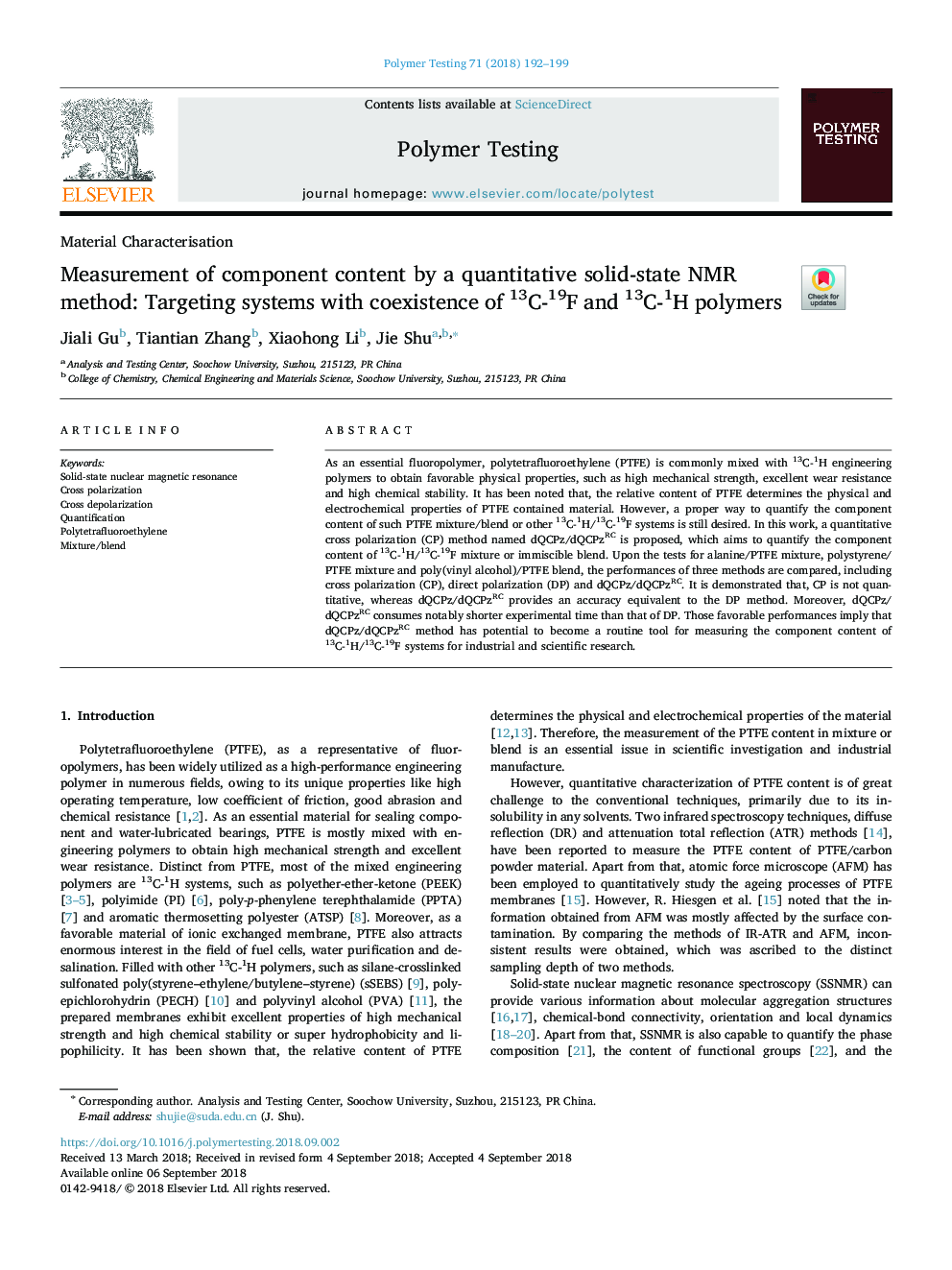| Article ID | Journal | Published Year | Pages | File Type |
|---|---|---|---|---|
| 10135282 | Polymer Testing | 2018 | 8 Pages |
Abstract
As an essential fluoropolymer, polytetrafluoroethylene (PTFE) is commonly mixed with 13C-1H engineering polymers to obtain favorable physical properties, such as high mechanical strength, excellent wear resistance and high chemical stability. It has been noted that, the relative content of PTFE determines the physical and electrochemical properties of PTFE contained material. However, a proper way to quantify the component content of such PTFE mixture/blend or other 13C-1H/13C-19F systems is still desired. In this work, a quantitative cross polarization (CP) method named dQCPz/dQCPzRC is proposed, which aims to quantify the component content of 13C-1H/13C-19F mixture or immiscible blend. Upon the tests for alanine/PTFE mixture, polystyrene/PTFE mixture and poly(vinyl alcohol)/PTFE blend, the performances of three methods are compared, including cross polarization (CP), direct polarization (DP) and dQCPz/dQCPzRC. It is demonstrated that, CP is not quantitative, whereas dQCPz/dQCPzRC provides an accuracy equivalent to the DP method. Moreover, dQCPz/dQCPzRC consumes notably shorter experimental time than that of DP. Those favorable performances imply that dQCPz/dQCPzRC method has potential to become a routine tool for measuring the component content of 13C-1H/13C-19F systems for industrial and scientific research.
Keywords
Related Topics
Physical Sciences and Engineering
Chemistry
Organic Chemistry
Authors
Jiali Gu, Tiantian Zhang, Xiaohong Li, Jie Shu,
